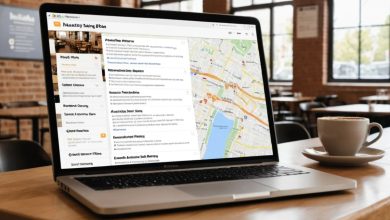Networking Opportunities for Remote Workers Worldwide
Remote work offers flexibility and freedom, but it can also lead to isolation, limited collaboration, and missed opportunities for professional growth. To thrive in a distributed environment, remote workers must proactively seek out networking avenues that span time zones and cultures. In this article, you will discover why networking is crucial for remote professionals, learn how to leverage virtual platforms and asynchronous strategies, explore hybrid and in-person options, and master advanced techniques to build a global support system.
Understanding the Importance of Networking for Remote Workers
What Constitutes a “Networking Opportunity” for Remote Professionals?
Networking opportunities for remote workers encompass any interaction—virtual or in-person—that connects professionals with peers, mentors, potential clients, or collaborators. These can take various forms:
-
Virtual meetups, webinars, and panel discussions where remote participants gather
-
Industry-specific online communities that facilitate group discussions and mentorship
-
Digital coworking sessions that simulate the office environment through video collaboration
-
In-person coworking spaces or local meetups organized by remote worker groups
Why Remote Workers Need Proactive Networking
Working from home or on the road can limit organic chances to meet others in your field. Proactive networking delivers:
-
Access to job leads, freelance gigs, and collaborative projects across time zones
-
Skill-sharing opportunities and mentoring relationships that foster professional development
-
Reduced feelings of isolation by connecting with peers who understand remote challenges
-
Increased visibility within global industry circles, enhancing your credibility and reach
Identifying Your Networking Goals as a Remote Worker
Effective networking begins with clarity about what you want to achieve. Use this checklist to define objectives:
-
Determine whether you seek collaborative projects, mentorship, skill-building, or new clients
-
Decide which formats you prefer—live video calls, asynchronous forums, local coworking meetups
-
Set measurable targets such as “attend two virtual events per month” or “contribute to one online discussion weekly”
-
Prioritize goals by urgency and relevance to your career path—for example, securing a mentorship within three months
Virtual Networking Platforms and Communities
Online Professional Networks and Social Platforms
Professional networks like dedicated social platforms offer fertile ground for remote worker networking. To maximize their potential:
-
Create a detailed profile highlighting your remote expertise: use terms like “remote worker,” “distributed team specialist,” or “digital nomad.”
-
Join industry-specific or remote-focused groups by searching keywords such as “remote marketing professionals” or “distributed web developers.”
-
Engage actively by posting a concise introduction and posing a value-driven question, for example, “As a remote cybersecurity analyst, which tools do you recommend for seamless collaboration with global teams?”
Industry-Specific Slack, Discord, and Forum Groups
Slack and Discord communities, along with specialized forums, provide real-time and asynchronous channels to connect with peers:
-
Slack Communities excel in structured channels and integrations; use channels labeled #networking, #projects, or #jobs to find new opportunities. The main pitfall is information overload—subscribe only to channels relevant to your niche.
-
Discord Servers offer voice channels and an informal vibe that can foster camaraderie, though the less formal tone may feel unprofessional at times.
-
Specialty Forums, such as Q&A sites or niche discussion boards, support deeper, archived discussions but lack real-time engagement.
To join these communities, search for “remote UX designers Slack” or “digital nomad Discord.” Introduce yourself with a brief, targeted message: “Hello, I’m Maya, a remote UX designer from Brazil. I’m interested in best practices for remote usability testing—any advice?”
Virtual Conferences, Webinars, and Meetups
Virtual events remain a central networking hub for remote workers:
-
Look for events with dedicated networking sessions such as speed networking rooms, breakout group discussions, or virtual coffee lounges.
-
Prioritize panel discussions and lightning talks that feature Q&A segments, allowing you to showcase your expertise by asking insightful questions.
-
Prepare a 30-second global-friendly elevator pitch: “I’m Leo, a remote project manager based in Portugal, specializing in agile methodologies for distributed software teams. I’d love to connect with project managers in North America and Asia to compare cross-cultural collaboration techniques.”
Register early, test your audio and video setups in advance, and arrive in breakout rooms with clear conversation goals—like exchanging best practices for remote onboarding.
Asynchronous Networking Strategies
Contributing to Knowledge-Sharing Platforms
Asynchronous engagement can broaden your network while respecting different time zones:
-
Identify high-traffic remote work blogs, Q&A sites, or community-driven platforms. Look for threads about “remote team productivity” or “digital nomad lifestyle.”
-
Provide detailed, actionable answers, citing real-world examples: “In my experience, using asynchronous stand-up tools like Daily.co increased our team’s productivity by 20%.”
-
Offer to follow up privately with supplementary resources or introductions to others who have faced similar challenges.
By consistently contributing valuable insights, you position yourself as a thought leader and attract inbound connections.
Creating and Sharing Original Content
Publishing original content fosters organic networking opportunities:
-
Focus on topics that resonate with remote workers and have demonstrable search interest, for example, “Building a Long-Term Remote Work Routine” or “Best Practices for Asynchronous Collaboration.”
-
Publish on platforms frequented by remote professionals—websites like Medium under remote-work tags, LinkedIn Pulse, or community blogs.
-
Promote your content across multiple channels (Slack, LinkedIn, Twitter) and invite readers to share feedback: “Have you faced similar challenges setting up a home office? Let’s discuss in the comments.”
A well-researched case study or tutorial can spark conversations that lead to new connections, mentorship possibilities, and collaboration offers.
Hybrid and In-Person Networking Options
Global Coworking Spaces and Network Hubs
Coworking spaces provide an opportunity for local in-person networking, even when traveling:
-
Evaluate spaces on features such as community events (skill shares, happy hours), networking lounges, and workshop calendars.
-
Search for “coworking [city name]” whenever you visit a new location. Check daily schedules for networking coffee chats or afternoon social events.
-
Introduce yourself to the community manager upon arrival: “Hello, I’m Ana, a remote content strategist here for the month. Are there any upcoming networking events I should know about?”
Coworking spaces often host smaller gatherings that foster deeper connections than large conferences.
Local Meetups and City-Based Remote Work Groups
Regional meetups give remote workers a chance to connect face-to-face:
-
Seek out groups labeled “digital nomads,” “remote professionals,” or “distributed teams” followed by your city name—for example, “Digital Nomads Berlin” or “Remote Workers NYC.”
-
Attend monthly mixers to exchange business cards, discuss local market nuances, and forge long-term collaborations.
-
Skill-based workshops, such as “Remote UX Design Bootcamp,” combine professional development with networking, allowing you to learn new techniques while building your local circle.
RSVP promptly, since many meetups cap attendance due to venue constraints. If possible, arrive a bit early to strike up conversations before the main session begins.
Co-Working Retreats and Onsite Networking Events
Multi-day coworking retreats blend work, learning, and social activities in attractive destinations:
-
Research retreats that align with your industry, such as “Remote Marketing Summit Bali” or “Distributed Dev Retreat Lisbon.”
-
Evaluate the cost-benefit ratio by examining the speaker lineup, networking agenda, and community reviews—retreats with structured workshops and ample free time often yield richer connections.
-
Plan your trip thoroughly: book accommodations early, prepare your digital portfolio, and ensure you have a reliable local SIM card or mobile hotspot.
Retreats create concentrated bursts of networking, allowing you to build relationships over informal dinners, group excursions, and collaborative work sessions.
Advanced Networking Techniques for Remote Workers
Time Zone–Aware Networking Etiquette
Scheduling across multiple time zones demands consideration and precision:
-
Always propose meeting slots in UTC alongside local times. For example: “I’m in GMT+2; would 10:00 AM my time (4:00 AM EDT) or 3:00 PM my time (9:00 AM EDT) work for a 20-minute call?”
-
Use scheduling tools that auto-convert time zones when sending calendar invites to minimize confusion.
-
Confirm the agreed-upon time in both participants’ time zones in your follow-up message to prevent misunderstandings.
Clarity and courtesy in time-zone communication not only demonstrate professionalism but also foster goodwill with potential collaborators.
Leveraging Mentorship and Peer Accountability Groups
Mentorship and peer support help remote workers maintain momentum and avoid burnout:
-
Search for remote-specific mentorship programs—many Slack communities and alumni networks host mentorship channels. When requesting mentorship, craft a concise message indicating your background, goals, and why you selected them. Offer to reciprocate by sharing resources or relevant connections.
-
Form or join peer accountability circles: a group of three to five professionals meeting weekly or biweekly. Use a shared document or group chat to set clear agendas—each member presents challenges, progress updates, and action items.
For instance, a group of freelance developers could meet every Tuesday to share job leads, code feedback, and productivity techniques. Over time, these regular touchpoints become a powerful support network.
Hosting Your Own Virtual Networking Event
Designing a well-structured virtual meetup positions you as a community leader and attracts like-minded professionals:
-
Choose a niche theme, such as “Remote Product Managers Roundtable” or “Global UX Design Critique Session,” to draw participants with shared interests.
-
Outline a clear agenda:
-
Welcome & Introductions (10 minutes): Each participant shares their name, location, and one skill they offer or an area they seek advice on.
-
Panel Discussion or Lightning Talks (20 minutes): Invite two or three speakers to share insights and take questions.
-
Breakout Room Sessions (15 minutes): Small groups of 3–4 discuss specific prompts, such as “Tools for seamless remote collaboration.”
-
Open Q&A or Networking Lounge (15 minutes): Unstructured networking time where participants share contact details and next steps.
-
-
Select a platform that supports breakout rooms and attendance tracking. Promote the event in relevant online communities, specifying the value proposition: “Join us to exchange best practices for asynchronous teamwork.”
During the event, use engagement tactics like live polls (“Which video conferencing tool do you find most reliable?”) and curated discussion prompts to keep energy high. Encourage attendees to share their handles and portfolio links in the chat.
After the event, send personalized thank-you messages within 24 hours: “Hi [Name], thanks for contributing to our ‘Remote UX Design Critique Session.’ I appreciated your insights on design accessibility. Here are the notes I compiled, and I’d love to continue our discussion—let me know if you’re available for a quick call next week.”
Measuring Networking Success and Iterating
Key Metrics to Track for Remote Worker Networking
Tracking performance helps you understand which activities yield the greatest return:
-
Number of new qualified connections made each month
-
Response rate to outreach messages within one week
-
Collaborations or referrals gained through network interactions
-
Frequency of contributions—posts, event attendance, mentorship sessions
Create a networking dashboard in a spreadsheet with columns: Contact Name | Platform/Event | Date Connected | Engagement Activity | Next Follow-Up Date | Outcome (e.g., referral, project collaboration). Review this dashboard monthly to identify which channels deliver the best results—then reallocate your time to the most effective platforms.
Collecting Feedback to Improve Networking Efforts
Feedback from peers and event participants reveals areas for improvement:
-
After hosting or attending an event, send a short survey (3–5 questions) asking about format, content value, and networking effectiveness. Questions might include:
-
“How valuable was the breakout session for making new connections?”
-
“Which platform feature did you find most helpful for networking?”
-
“What topics would you like covered in future events?”
-
-
Analyze responses to pinpoint strengths and weaknesses. If participants request shorter breakout sessions or more structured introductions, adjust accordingly in future meetups.
Continuous Improvement Loop for Sustainable Networking
Ongoing iteration ensures your networking efforts remain fresh and impactful:
-
Schedule quarterly reviews to assess progress against your networking goals. Update your elevator pitch based on evolving skills and feedback.
-
Experiment with new formats—if Slack community engagement is waning, pivot to a Discord server or invest in hosting a small in-person workshop when traveling.
-
Refresh content contributions by sharing current insights, hosting mini skill-sharing sessions, or co-authoring articles with other remote professionals.
For example, if your engagement metrics reveal that a particular Slack channel yields high-quality connections, double down on your participation there, perhaps by leading a monthly AMA (ask-me-anything) session.
Frequently Asked Questions (FAQs)
What Platforms Offer the Best Networking Opportunities for Remote Workers?
Focus on a combination of industry-specific Slack or Discord communities, virtual conference platforms with networking breakouts, and professional social networks that host remote-work groups. These platforms provide real-time and asynchronous ways to meet peers across disciplines and regions.
How Can Remote Workers Network Across Different Time Zones?
-
Propose meeting slots in both local times and UTC to reduce confusion.
-
Participate in asynchronous discussions via forums and Slack channels that allow 24/7 engagement.
-
Record key sessions or conversations for later review, ensuring you don’t miss valuable insights when time zones conflict.
Are In-Person Networking Events Still Relevant for Remote Professionals?
Absolutely. In-person meetups at coworking spaces, local digital nomad gatherings, and coworking retreats enable deeper, face-to-face connections. These experiences complement virtual networking, giving you a balanced approach to relationship-building.
How Often Should Remote Workers Engage in Networking Activities?
Aim to participate in at least one virtual event or community contribution each week. Additionally, strive to attend at least one hybrid or in-person networking opportunity per quarter—this blend ensures your network remains robust, diverse, and well-nurtured.
Conclusion
Networking is not a luxury for remote professionals—it is essential for career growth, collaboration, and well-being. By leveraging virtual platforms such as Slack, Discord, and dedicated remote work conferences, you connect with colleagues worldwide from your home office. Asynchronous strategies like contributing to knowledge-sharing platforms and publishing original content expand your reach even when schedules don’t align. Hybrid options—coworking spaces, local meetups, and multi-day retreats—help you build face-to-face relationships that strengthen trust. Advanced techniques, including time zone–aware scheduling, mentorship circles, and hosting your own networking events, ensure you maximize every interaction. Implement these strategies consistently to cultivate a diverse, supportive network that propels your remote career to new heights.
Published on: 4 de June de 2025








